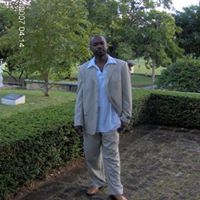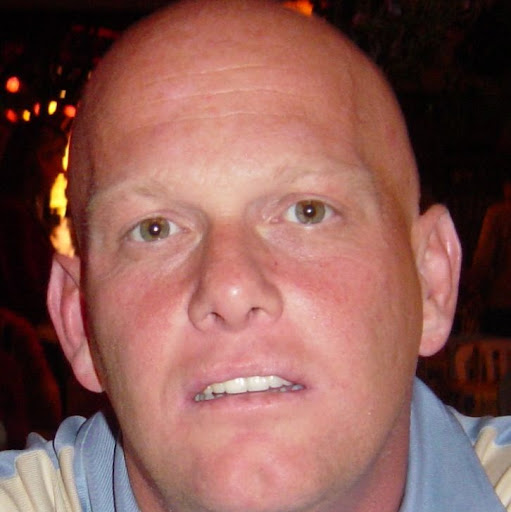William H Goddard
age ~91
from Alhambra, CA
- Also known as:
-
- William Rv Goddard
- William K Goddard
- William H Gooddard
- William H Chrisman
- Richard B Valdry
- William V
- Helen Ash
- Phone and address:
- 625 W Commonwealth Ave APT 216, Alhambra, CA 91801
William Goddard Phones & Addresses
- 625 W Commonwealth Ave APT 216, Alhambra, CA 91801
- Phoenix, AZ
- Cape Coral, FL
- Dayton, OH
- Lauderhill, FL
- West Palm Beach, FL
- Long Beach, CA
- Winter Garden, FL
- Elk Grove, CA
- Pasadena, CA
Wikipedia References

William Andrew Goddard Iii
Us Patents
-
Optical Gas Monitor
view source -
US Patent:7843565, Nov 30, 2010
-
Filed:May 29, 2007
-
Appl. No.:11/807538
-
Inventors:Sheng Wu - San Gabriel CA, US
Andrei Deev - Pasadena CA, US
Steve L. Palm - Escondido CA, US
Yongchun Tang - Walnut CA, US
William A. Goddard - Pasadena CA, US -
Assignee:California Institute of Technology - Pasadena CA
-
International Classification:G01N 21/25
-
US Classification:356416
-
Abstract:A frequency modulated spectroscopy system, including a photo-detector, a band-pass filter to filter the output of the photo-detector, and a rectifier to demodulate. The band-pass filter has a relatively high Q factor. With the high Q factor band-pass filter and rectifier, a reference sinusoid is not required for demodulation, resulting in phase-insensitive spectroscopy. Other embodiments are described and claimed.
-
Co-Polymer Films For Sensors
view source -
US Patent:7858720, Dec 28, 2010
-
Filed:Jun 19, 2007
-
Appl. No.:11/820472
-
Inventors:Margaret A. Ryan - Pasadena CA, US
Margie L. Homer - Pasadena CA, US
Adam Kisor - Pasadena CA, US
April D. Jewell - Somerville MA, US
Abhijit V. Shevade - Altadena CA, US
Kenneth S. Manatt - Tujunga CA, US
Charles Taylor - Claremont CA, US
Mario Blanco - Temple City CA, US
William A. Goddard - Pasadena CA, US -
Assignee:California Institute of Technology - Pasadena CA
-
International Classification:C08F 126/06
-
US Classification:526263, 526265, 526346, 526347
-
Abstract:Embodiments include a sensor comprising a co-polymer, the co-polymer comprising a first monomer and a second monomer. For some embodiments, the first monomer is poly-4-vinyl pyridine, and the second monomer is poly-4-vinyl pyridinium propylamine chloride. For some embodiments, the first monomer is polystyrene and the second monomer is poly-2-vinyl pyridinium propylamine chloride. For some embodiments, the first monomer is poly-4-vinyl pyridine, and the second monomer is poly-4-vinyl pyridinium benzylamine chloride. Other embodiments are described and claimed.
-
Nanowire Sensor, Sensor Array, And Method For Making The Same
view source -
US Patent:8187865, May 29, 2012
-
Filed:May 29, 2009
-
Appl. No.:12/455186
-
Inventors:Minhee Yun - La Crescenta CA, US
Nosang Myung - Rosemead CA, US
Richard Vasquez - Altadena CA, US
Margie Homer - Pasadena CA, US
Margaret Ryan - Pasadena CA, US
Jean-Pierre Fleurial - Altadena CA, US
Ratnakumar Bugga - Arcadia CA, US
Daniel Choi - Los Angeles CA, US
William Goddard - Pasadena CA, US
Abhijit Shevade - Pasadena CA, US
Mario Blanco - Temple City CA, US
Tahir Cagin - Arcadia CA, US
Wely Floriano - Pasadena CA, US -
Assignee:California Institute of Technology - Pasadena CA
-
International Classification:C12M 1/34
C12M 3/00 -
US Classification:4352872, 977762, 422 681, 422 8201, 422 8202, 4352831, 4352871, 4352883
-
Abstract:The present invention relates to a nanowire sensor and method for forming the same. More specifically, the nanowire sensor comprises at least one nanowire formed on a substrate, with a sensor receptor disposed on a surface of the nanowire, thereby forming a receptor-coated nanowire. The nanowire sensor can be arranged as a sensor sub-unit comprising a plurality of homogeneously receptor-coated nanowires. A plurality of sensor subunits can be formed to collectively comprise a nanowire sensor array. Each sensor subunit in the nanowire sensor array can be formed to sense a different stimulus, allowing a user to sense a plurality of stimuli. Additionally, each sensor subunit can be formed to sense the same stimuli through different aspects of the stimulus. The sensor array is fabricated through a variety of techniques, such as by creating nanopores on a substrate and electrodepositing nanowires within the nanopores.
-
Co-Polymer Films For Sensors
view source -
US Patent:8338552, Dec 25, 2012
-
Filed:Nov 16, 2010
-
Appl. No.:12/947598
-
Inventors:Margaret A. Ryan - Pasasdena CA, US
Margie L. Homer - Pasadena CA, US
Adam Kisor - Pasadena CA, US
April D. Jewell - Somerville MA, US
Abhijit V. Shevade - Altadena CA, US
Kenneth S. Manatt - Tujunga CA, US
Charles Taylor - Claremont CA, US
Mario Blanco - Temple City CA, US
William A. Goddard - Pasadena CA, US -
Assignee:California Institute of Technology - Pasadena CA
-
International Classification:C08F 26/06
C08F 126/06 -
US Classification:526260, 526265
-
Abstract:Embodiments include a sensor comprising a co-polymer, the co-polymer comprising a first monomer and a second monomer. For some embodiments, the first monomer is poly-4-vinyl pyridine, and the second monomer is poly-4-vinyl pyridinium propylamine chloride. For some embodiments, the first monomer is polystyrene and the second monomer is poly-2-vinyl pyridinium propylamine chloride. For some embodiments, the first monomer is poly-4-vinyl pyridine, and the second monomer is poly-4-vinyl pyridinium benzylamine chloride. Other embodiments are described and claimed.
-
System And Methods For Predicting Transmembrane Domains In Membrane Proteins And Mining The Genome For Recognizing G-Protein Coupled Receptors
view source -
US Patent:8370074, Feb 5, 2013
-
Filed:Oct 27, 2009
-
Appl. No.:12/606605
-
Inventors:Rene J. Trabanino - Los Angeles CA, US
Nagarajan Vaidehi - Arcadia CA, US
Spencer E. Hall - Tucson AZ, US
William A. Goddard - Pasadena CA, US
Wely Floriano - Pasadena CA, US -
Assignee:California Institute of Technology - Pasadena CA
-
International Classification:G01N 33/48
C12Q 1/68
G06G 7/58
G06F 7/60 -
US Classification:702 19, 435 6, 702 20, 703 2, 703 11, 700 90
-
Abstract:The invention provides computer-implemented methods and apparatus implementing a hierarchical protocol using multiscale molecular dynamics and molecular modeling methods to predict the presence of transmembrane regions in proteins, such as G-Protein Coupled Receptors (GPCR), and protein structural models generated according to the protocol. The protocol features a coarse grain sampling method, such as hydrophobicity analysis, to provide a fast and accurate procedure for predicting transmembrane regions. Methods and apparatus of the invention are useful to screen protein or polynucleotide databases for encoded proteins with transmembrane regions, such as GPCRs.
-
Functional Anchors Connecting Graphene-Like Carbon To Metal
view source -
US Patent:8481421, Jul 9, 2013
-
Filed:Jul 24, 2008
-
Appl. No.:12/179345
-
Inventors:William A. Goddard - Pasadena CA, US
Weiqiao Deng - Pasadena CA, US
Yuki Matsuda - Pasadena CA, US -
Assignee:California Institute of Technology - Pasadena CA
-
International Classification:H01L 21/4763
-
US Classification:438618
-
Abstract:Functional linkers or anchors interconnecting graphene-like carbon, such as nanotubes or graphite sheets, with a conducting material such as a metal, are shown, together with related structures, devices, methods and systems.
-
Methods And Apparatus For Predicting Ligand Binding Interactions
view source -
US Patent:20020099506, Jul 25, 2002
-
Filed:Nov 30, 2001
-
Appl. No.:10/010725
-
Inventors:Wely Floriano - Pasadena CA, US
Nagarajan Vaidehi - Arcadia CA, US
William Goddard - Pasadena CA, US -
International Classification:G06G007/48
G06G007/58
G06F019/00
G01N033/48
G01N033/50 -
US Classification:702/019000, 703/011000
-
Abstract:Computer-implemented methods and apparatus implement a hierarchy of molecular modeling techniques for predicting binding sites of ligands in proteins, designing new pharmaceuticals and understanding the interactions of proteins involved in microbial pathogens. The techniques employ a hierarchical strategy ranging from coarse grain to fine grain conformational search methods combined with hierarchical levels of accuracy in scoring functions.
-
De Novo Processing Of Electronic Materials
view source -
US Patent:20020188373, Dec 12, 2002
-
Filed:Mar 28, 2002
-
Appl. No.:10/113919
-
Inventors:William Goddard - Pasadena CA, US
Gyeong Hwang - Austin TX, US -
International Classification:B29C045/00
-
US Classification:700/200000
-
Abstract:Computer programs and computer-implemented methods for predicting from first principles the behavior of dopants and defects in the processing of electronic materials. The distribution of dopant and defect components in a substrate lattice is predicted based on external conditions and fundamental data for a set of microscopic processes that can occur during material processing operations. The concentration behavior of one or more fast components is calculated in two stages, by solving a first relationship for a time period before the fast component reaches a pseudo steady state at which the concentration of the fast component is determined by concentrations of one or more second components, and by solving a second relationship for a time period after the first component reaches the pseudo steady state. Application of these methods to modeling ultrashallow junction processing is also described.
Name / Title
Company / Classification
Phones & Addresses
JPF INVESTMENTS I, LLC
Owning and Operating Thoroughbred Raceho · Investor
Owning and Operating Thoroughbred Raceho · Investor
1850 N Central Ave #1160, Phoenix, AZ 85004
18500 Von Karman Ave #400, Irvine, CA 92612
18500 Von Karman Ave #400, Irvine, CA 92612
Director
Sea Tower Apartments, Inc
Apartment Building Operator
Apartment Building Operator
2840 N Ocean Blvd, Fort Lauderdale, FL 33308
9545662632
9545662632
JRW HOLDINGS, LTD
President, Director
G.M.G. & Associates Inc
813 NW 13 Ave, Dania Beach, FL 33004
President, Director
Power Pack Inc
227 Security Trust, Hialeah, FL 33010
President, Director
The Auto Rental Co
275 Flagler Dr, Miami, FL 33166
WAG3 Management, LLC
Investments
Investments
950 Arden Rd, Pasadena, CA 91106
License Records
William W Goddard
License #:
E-1089 - Expired
Category:
Engineering Intern
William C Goddard
Phone:
5132268386
License #:
4132 - Expired
Category:
Health Care
Issued Date:
May 25, 1995
Effective Date:
Jan 1, 1901
Expiration Date:
Jan 31, 1999
Type:
Registered Respiratory Therapist
William C Goddard
Address:
2705 E Whipp Rd, Centerville, OH
License #:
1622 - Expired
Category:
Health Care
Issued Date:
May 20, 1988
Effective Date:
Jan 1, 1901
Expiration Date:
Dec 31, 1988
Type:
Registered Respiratory Therapist
Resumes

Fan Team Co-Leader At Ywam, Salem
view sourceLocation:
United States

Professor At California Institute Of Technology
view sourceLocation:
Greater Los Angeles Area
Industry:
Education Management

William Goddard
view sourceLocation:
United States
Isbn (Books And Publications)

Handbook of Nanoscience, Engineering, and Technology
view sourceAuthor
William A. Goddard
ISBN #
0849312000

The Government Models: The Development of the Colt Model 1911
view sourceAuthor
William H. Goddard
ISBN #
0917218248

Low-Cost Microtechnology Learning Aids in the Classroom
view sourceAuthor
William Goddard
ISBN #
0771983166
Medicine Doctors

William Bell Goddard
view sourceSpecialties:
Obstetrics & Gynecology
Gynecology
Gynecology
Education:
University of Pennsylvania(1947)
Classmates

William Goddard
view sourceSchools:
McKinley Elementary School Burbank CA 1949-1956, David Starr Jordan Middle School Burbank CA 1956-1958
Community:
Tom Evans, Linda Holtz

William Goddard
view sourceSchools:
Malden Vocational High School Malden MA 1958-1962
Community:
Robin Mansfield, Leah Cobb, Charles Kenyon, Dave Marsters

William Goddard
view sourceSchools:
Loyola Elementary School Los Altos CA 1954-1958
Community:
Tim Ryan, Ken Dufault, Karen Kessler

William Goddard
view sourceSchools:
Leonardtown High School Leonardtown MD 1980-1984
Community:
Vince Carrico

William Goddard
view sourceSchools:
Moravian Preparatory Bethlehem PA 1960-1964
Community:
Samuel Thomas, John Walters, Eric Geist

William Goddard
view sourceSchools:
Chase County High School Imperial NE 1956-1960
Community:
Donna Clayburg, Rosalie O'brien, Carole Beard, Bill Martin, Bonnie Evans, Darla Eaton, Judy Browning, Melody Newman, Mabel Brown

William Goddard
view sourceSchools:
Williams High School Stockbridge MA 1954-1958
Community:
Jeanie Jones, Winston Steadman, Leon Mongue, Judith Wood, Jeanne Cornell, Joseph Carr, David Halley, Patricia Hakes, Peter Angelini, Charles Tyler

William Goddard
view source
Princess N William Goddard
view source
William Goddard
view source
William Goddard
view source
William Goddard
view source
William Goddard
view source
John William Goddard
view source
William Orlando Goddard
view sourceMyspace
Youtube
Flickr
Googleplus

William Goddard
Education:
Columbus Tech, Queen of All Saints, Bishop Loughlin, Berkeley College

William Goddard

William Goddard

William Goddard

William Goddard

William Goddard

William Goddard

William Goddard
News

The Postal Service Is a Civic Institution, Not a Business
view source- ratification in 1787 and 1788, some antifederalist printers accused the Post Office of suppressing their publications and arguments against the Constitution. William Goddard, the mastermind of the 1774 "Constitutional Post," ominously suggested he would once again start his own postal system.
- Date: Apr 25, 2012
- Category: U.S.
- Source: Google
Get Report for William H Goddard from Alhambra, CA, age ~91

















